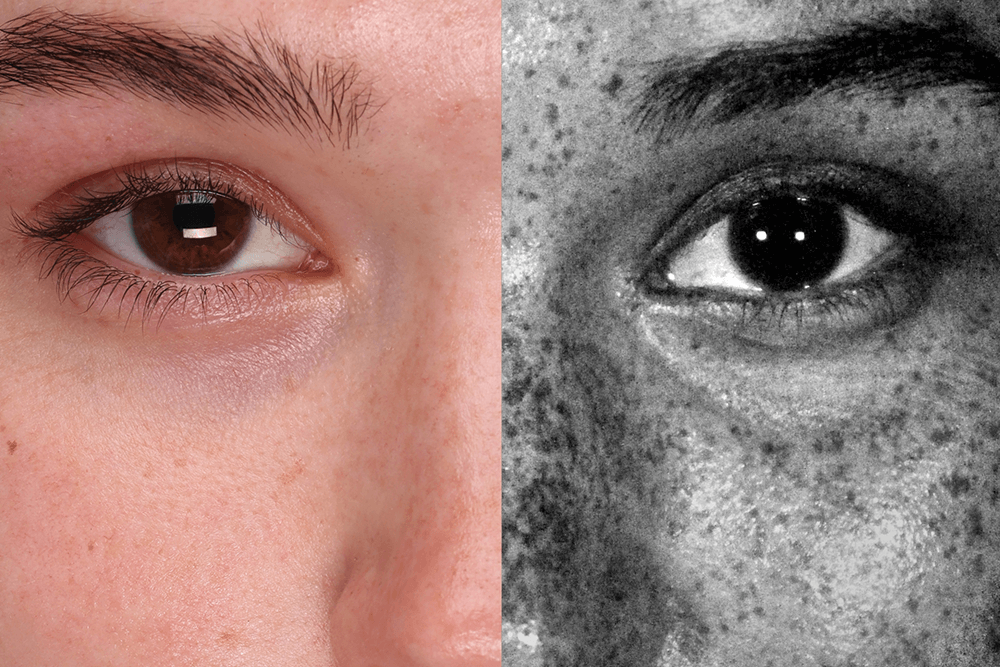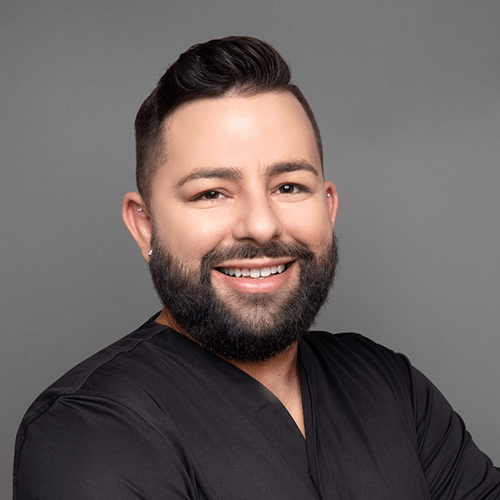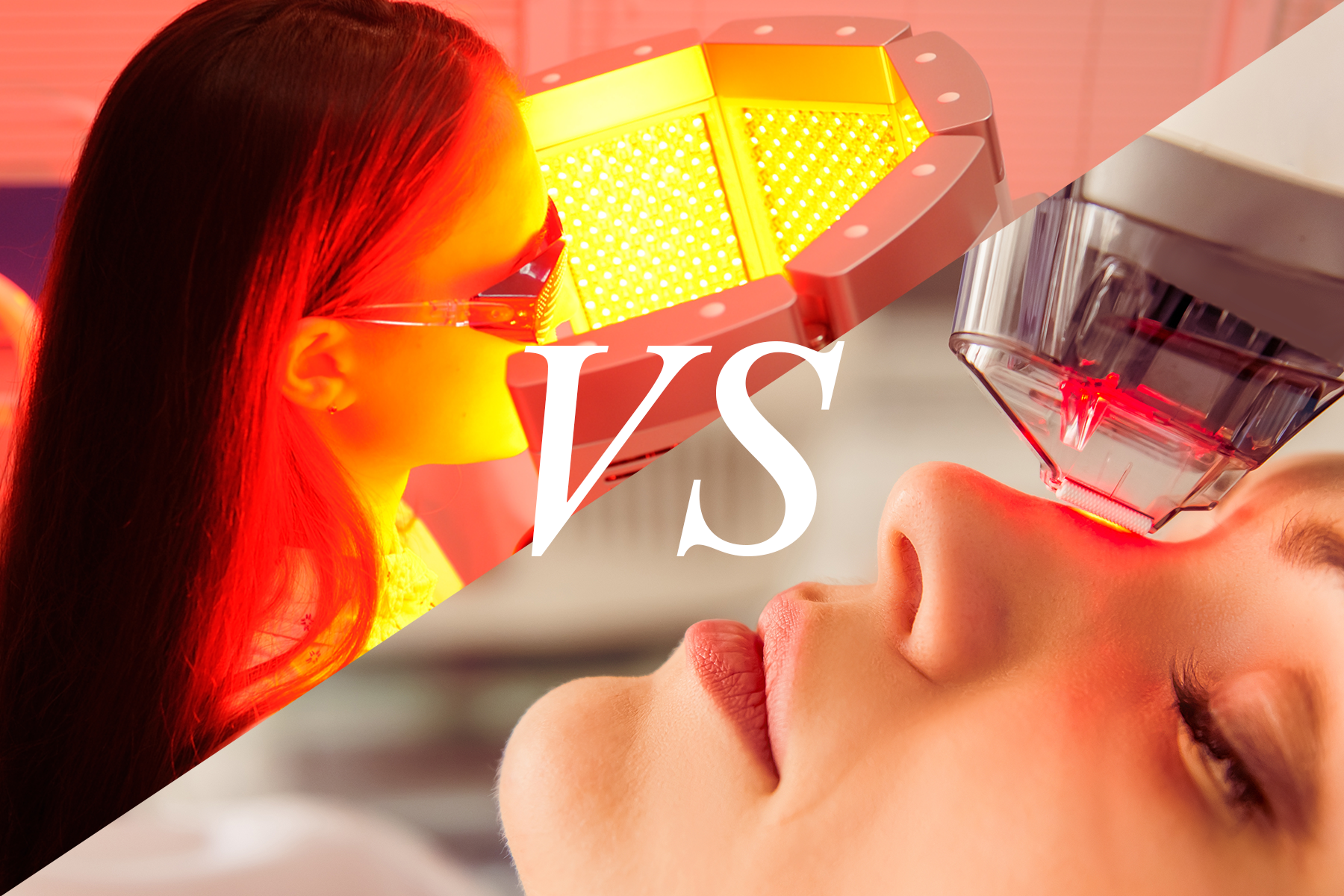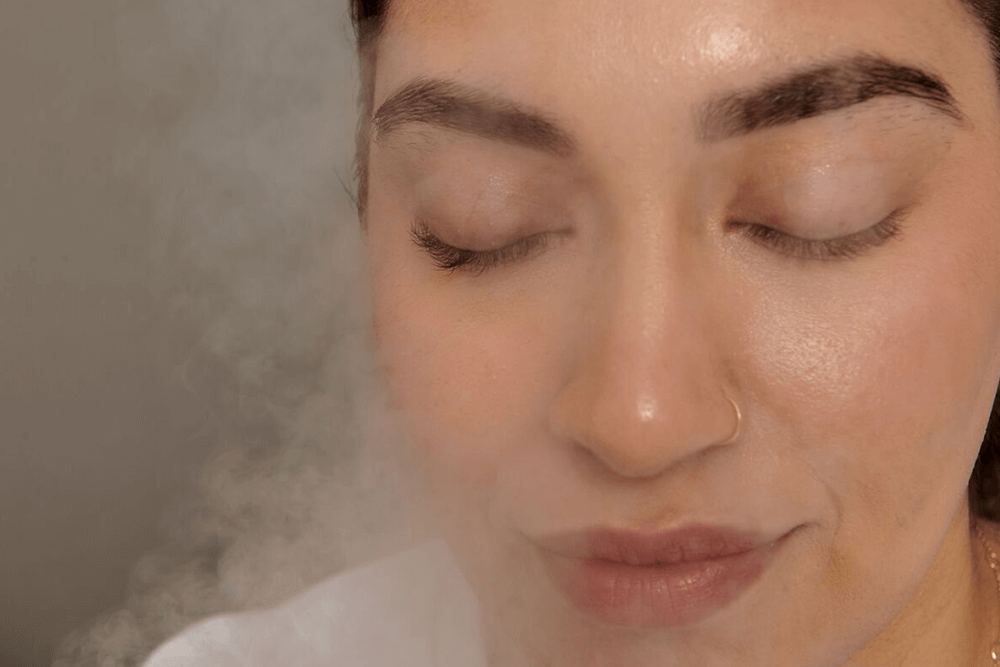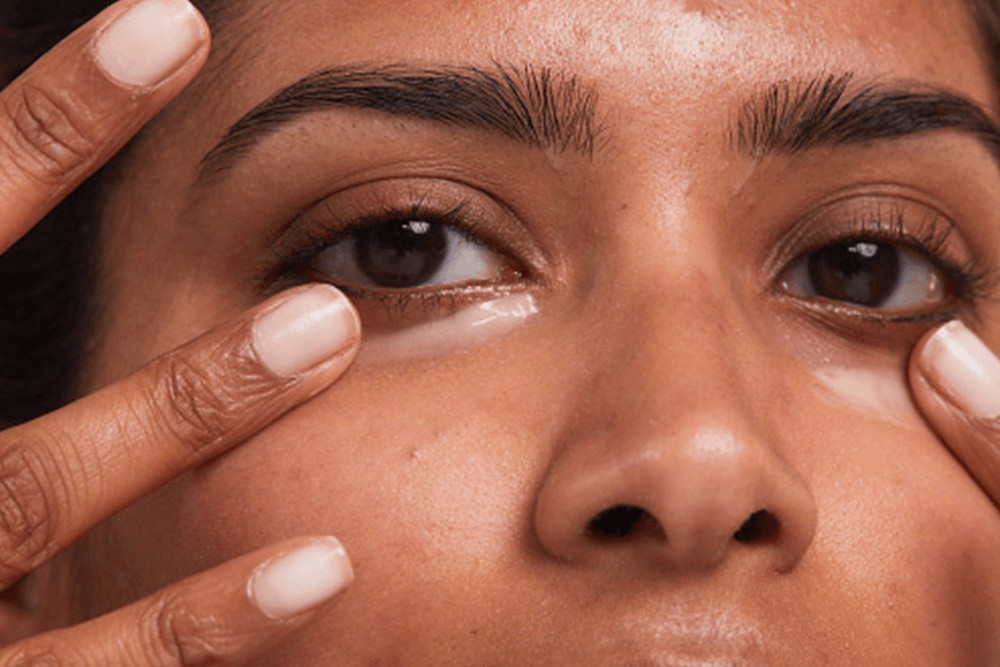The+Source
Right now, at this very moment, as you’re reading these words, there are changes taking place deep inside your skin. These are changes that will impact how you look in the future – tomorrow, next month, and 10 or 15 years from now. And they’re changes that are invisible to the naked eye until they suddenly appear, fully formed, on your face in the guise of a wrinkle or dark spot.
What is a Wood’s lamp, and what are its benefits?
Knowledge is power, right? You don’t have to sit around and be surprised when it comes to finding out what potential damage is percolating in your skin. A handy device called a Wood’s lamp uses a long-wave ultraviolet light (commonly known as black light) to reveal the presence of pigmentary changes (as well as bacteria and fungi) invisible to the naked eye. It’s like a personal fortune teller for your skin, but one whose predictions you can actually trust.
The reason Wood’s lamps have become so popular is that so much of what we’ve done to our skin in the past doesn’t become apparent until much, much later. For example, if you get a sunburn, the redness and inflammation may subside after a few days. However, that burn has also caused cellular damage on a deep level, and the domino effect of that (read: fine lines, discoloration) won’t be clear until long after summer has ended. Just as a pore blockage could be forming right now, although it may not erupt into a pimple for days or weeks, past photodamage could be fermenting beneath the skin’s surface and won’t immediately manifest as fine lines or discoloration. A Wood’s lamp exam can see into the future by revealing areas of sub-surface skin damage, as well as dryness, oiliness, and everything related to those conditions, like comedones. The only thing a Wood’s lamp can’t do is give an effective reading on darker skin tones (Fitzpatrick types IV-VI). If you fall into that category, you’ll want to go to your dermatologist for a surface exam with magnifying lenses to track damage.
No matter what your Fitzpatrick type, you’ve likely heard that the majority of sun damage happens before you turn 18. This is a common misconception, and it’s led a lot of people to think that developing good skincare habits (such as daily SPF 30 application) in their 20s and beyond is a lost cause. In fact, according to a study from the American Society for Photobiology, at the age of 18, you only have around 20 percent of the sun damage that you’re going to accumulate over your lifetime. Each decade, you add about 10 percent more to your damage total. Do the math and you’ll realize that means most of a person’s sun damage actually occurs after the age of 40. Ergo, there’s no excuse not to adopt a comprehensive skincare routine – no matter how old you are.
But it’s not just photodamage that triggers cellular short-circuiting. Pollution, stress, and other unavoidable parts of daily living are all tied to the free radicals that chip away at our skin supports.
What to expect from a Wood’s lamp exam
A Wood’s lamp examination is utterly painless and despite using ultraviolet (UV) light, doesn’t cause any skin damage. That said, while you can easily find home-use Wood’s lamps for sale online, you really need someone with specific training (either a dermatologist or an aesthetician) to interpret the results.
To prepare for your appointment, your face should be free of makeup, skincare products, and fragrance and not recently washed. You’ll go into a darkened room, and your practitioner will shine the lamp a few inches from your skin. Normal skin will appear slightly blue, but areas of excess pigmentation and sun damage will glow or fluoresce when exposed to UV light. Exposure to a Wood’s lamp can also reveal the presence of acne.
Once you and your skincare specialist have peered into your face’s future, you’ll be able to formulate a plan of attack to keep what lies beneath from rising to the surface. After all, when it comes to maintaining glowing, radiant skin, the best defense is a good offense.
How To Read a Wood’s Lamp
A Wood’s lamp examination is utterly painless and despite using ultraviolet (UV) light, doesn’t cause any skin damage. That said, while you can easily find home-use Wood’s lamps for sale online, you really need someone with specific training (either a dermatologist or an aesthetician) to interpret the results.
To prepare for your appointment, your face should be free of makeup, skincare products, and fragrance and not recently washed. You’ll go into a darkened room, and your practitioner will shine the lamp a few inches from your skin. Normal skin will appear slightly blue, but areas of excess pigmentation and sun damage will glow or fluoresce when exposed to UV light. Exposure to a Wood’s lamp can also reveal the presence of acne.
Once you and your skincare specialist have peered into your face’s future, you’ll be able to formulate a plan of attack to keep what lies beneath from rising to the surface. After all, when it comes to maintaining glowing, radiant skin, the best defense is a good offense.
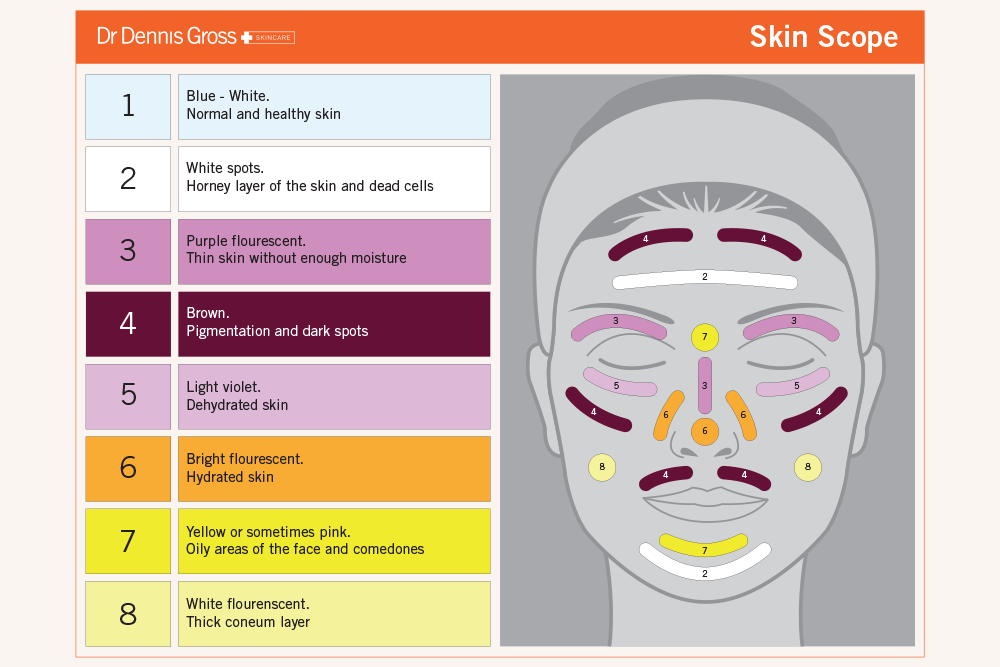
|
SKIN CONDITION |
WOOD’S LAMP INDICATION |
|
Excessive dryness |
White fluorescence |
|
Dead skin cells |
White spots |
|
Normal & healthy skin |
Blue-white |
|
Dehydrated skin |
Light violet |
|
Hydrated skin |
Bright fluorescence |
|
Oily areas/comedones |
Orange/pink |
|
Pigmentation/dark spot/sun damage |
Brown |
|
Blackheads |
Yellow/orange |
|
Certain fungal infections |
Yellow/green |
Discover Dr. Dennis Gross Skincare for All Your Skincare Needs
For more skincare tips from the experts at Dr. Dennis Gross, check out our blog’s newest content today. Shop the collection of Dr. Dennis Gross bestselling skincare backed by dermatologists.
